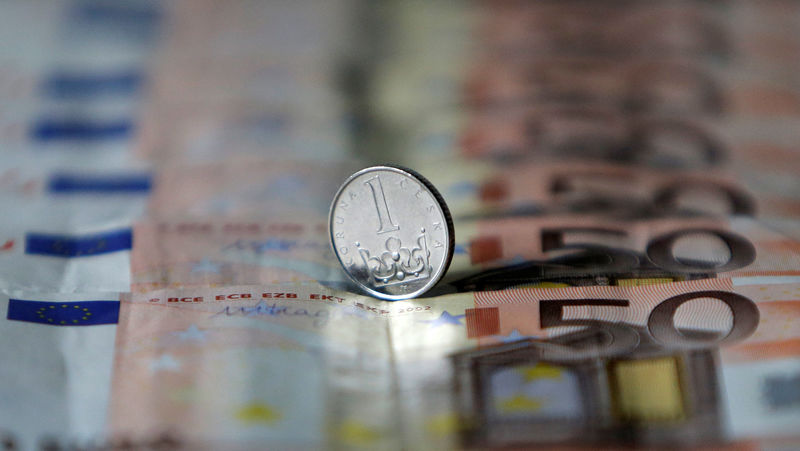By Alan Charlish and Miroslava Krufova
WARSAW/PRAGUE (Reuters) - Central Europe's leading currencies should firm against the euro over the coming year, according to a Reuters poll, as a steady rate outlook in the region contrasts with monetary easing in the euro zone and the United States.
Central European ratesetters are adopting a wait-and-see approach, as moves toward lower borrowing costs in major economies take pressure off them to tighten monetary conditions in the face of inflationary pressures. The region's economies are expected to grow strongly this year and next.
"Global monetary policy conditions are likely to remain highly accommodative," said Marcin Sulewski, an economist at Santander (MC:SAN) Bank Polska.
The poll of 27 analysts predicted the Czech crown (EURCZK=) would rise 1.88% against the euro, the Polish zloty (EURPLN=) 2.15% and the Hungarian forint (EURHUF=) 1.46%.
In Poland, central bank governor Adam Glapinski has said rates are likely to stay on hold until 2022. Faced with an increase in inflation, some rate-setters still see a hike as justified, but they are in a minority.
"We think that some hawkish signals from the Polish central bank could intensify in the months to come ... this will be a supportive factor for the zloty," said Sulewski.
The Czech central bank has signaled rates will stay unchanged in coming quarters but will also closely monitoring the exchange rate as the crown has underperformed its assumptions in the past.
"We believe the (crown) ...is now affected mainly by the negative sentiment in the world economy and it's much weaker than it should be if we consider only the fundamentals of the Czech economy," said Jiri Polansky, an economist at Ceska Sporitelna.
In Hungary, a decline in headline inflation to 3.4% in June from a seven-year high of 3.9% in May has tempered tightening bets. Analysts expect unchanged rates this year.
"We look for a stable EUR/HUF, settling around the 325 gravity line in coming months," said Peter Virovacz, senior economist at ING.
"Normalization in Hungarian headline CPI can help, as well as the attractiveness of HGB (Hungarian government bonds). Last, but not least, the speculative community still remains fairly short HUF."
According to the poll, the Romanian leu (EURRON=) is seen weakening 1.98% against the euro in the coming year and the Serbian dinar (EURRSD=) falling 0.28%.
"The depreciation of the Romanian leu should be driven by a ... broadening of the current account deficit... We see very strong wage growth and hikes of pensions are scheduled soon," said Jakub Kratky, financial analyst at Generali (MI:GASI) Investments CEE.
"We assume relative stability of the dinar, as the NBS (National Bank of Serbia) is pretty active in terms of FX interventions."

(Reporting and Polling by Alan Charlish and Miroslava Krufova; editing by John Stonestreet)